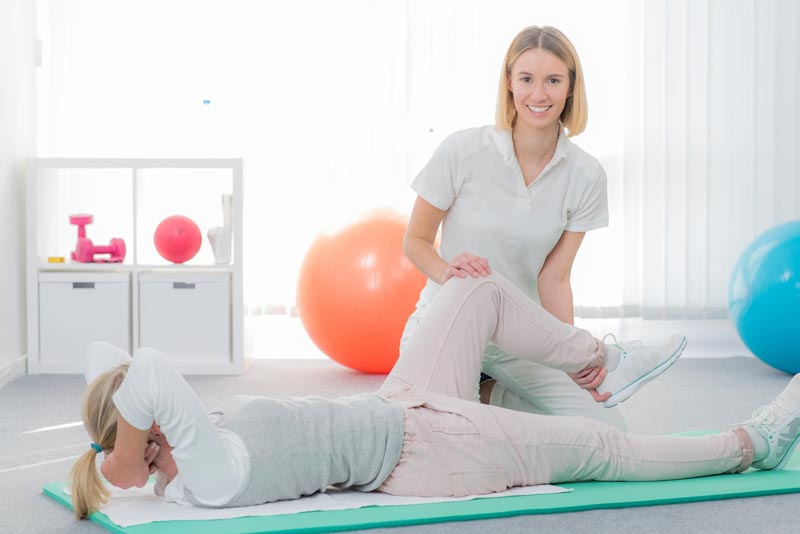What is Prehab?
share this article
The purpose of physical therapy and exercises before your surgery is to optimally prepare your body physically for the surgery. This in turn will improve your outcome and speed of recovery after surgery.
- Maximizing your strength, both around the surgical joint and your whole body
- Maximizing your range of motion, both at the joint and other joints of the body
- Maximizing your mobility including walking, ascending/descending stairs, and transferring to and from your bed, chairs, the toilet, the shower, and the car
- Ensuring that you are educated on how to safely and effectively use different equipment after your surgery such as possibly a rolling walker, raised toilet seat, reacher, or shower bench (among other things)

Okay, so you’re probably thinking is all this preparation worth it. Why can’t I just wait to do the exercises and physical therapy after my surgery? Well, let’s briefly look at some of the evidence in the literature and see if that changes your mind.
- A study from 2003 looked at what factors helped predict TKR postoperative knee range of motion. The authors concluded that the most predictive factor was the preoperative knee range of motion. This supports the importance of performing exercises to maximize knee ROM prior to surgery.
- A study from 2006 looked at individuals who underwent a 6-week exercise program before either knee replacement or hip replacement surgery. The results found in the exercise group a significant reduction in the odds of being discharged to an inpatient rehabilitation facility after surgery.
- A study from 2013 assessed 28 individuals receiving a knee or hip replacement who completed a prehab program. These individuals showed statistically significant improvements in functional tests and measures following the prehab program.
- A 2014 study compared patients receiving preoperative physical therapy and those that did not receive preoperative physical therapy before having knee replacement or hip replacement surgery. The study results showed a 29% decrease in the use of post-acute care services for those who went to preoperative physical therapy.
- A 2017 study compared individuals who performed high-intensity training prior to knee replacement surgery with a control group. The group that completed the training before surgery had better results at 1 month and 3 months after surgery in measures of strength, range of motion, pain, and overall function. This supports the use of prehab for an improved and faster recovery after surgery.
Prehab is an important aspect of your joint replacement journey. Completing a prehab exercise program will improve your strength and range of motion after surgery, as well as your overall function. It is important to complete prehab training to improve the likelihood of a faster recovery after surgery.
1. Ritter, Merrill A., et al. “Predicting range of motion after total knee arthroplasty: clustering, log-linear regression, and regression tree analysis.” JBJS 85.7 (2003): 1278-1285.
2. Rooks, Daniel S., et al. “Effect of preoperative exercise on measures of functional status in men and women undergoing total hip and knee arthroplasty.” Arthritis Care & Research 55.5 (2006): 700-708.
3. Desmeules, François, Jayne Hall, and Linda June Woodhouse. “Prehabilitation improves physical function of individuals with severe disability from hip or knee osteoarthritis.” Physiotherapy Canada 65.2 (2013): 116-124.
4. Snow, Richard, et al. “Associations between preoperative physical therapy and post-acute care utilization patterns and cost in total joint replacement.” JBJS 96.19 (2014): e165.
5. Calatayud, Joaquin, et al. “High-intensity preoperative training improves physical and functional recovery in the early post-operative periods after total knee arthroplasty: a randomized controlled trial.” Knee Surgery, Sports Traumatology, Arthroscopy 25.9 (2017): 2864-2872.
Photo Source: Used with permission of ADOBE ID.
share this article
Subscribe to our newsletter
Join our mailing list to receive the latest news and updates from the Knee Replacement Therapists. Also, for a limited time, receive a free article from The Knee Replacement Therapists describing why your x-rays may not be giving you the whole story.
Free Preview
Click here for a free preview of some of the content found in our video Programs
Knee to Know Show
Click here to checkout our popular vlog with videos on a variety of topics related to knee replacement surgery, knee pain and arthritis, and helpful exercises and activities.
Ready to get started?
Browse our programs, or purchase now.




